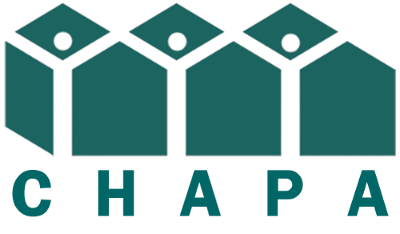FHFA Proposes Changes to the Affordable Housing Program
The Federal Housing Finance Agency (FHFA) is proposing wide-ranging changes to the regulations governing the Federal Home Loan Banks’ Affordable Housing Program (AHP).
According to the National Low Income Housing Coalition, the proposed amendments would allow the Banks to establish special competitive funds that target specific affordable housing needs in their districts and design and implement their own project selection scoring criteria, among many other provisions. Many affordable rental projects receive AHP gap financing, including a number of national Housing Trust Fund projects awarded funds in 2016. FHFA provided an advance copy of its proposed rule changes on March 6.
There are 11 Federal Home Loan Banks whose members are local lending institutions. Each Bank must annually contribute to its AHP 10% of its net income from the preceding year, subject to a minimum annual combined contribution by all of the Banks of $100 million. The current AHP regulation authorizes two programs: a mandatory Competitive Application Program and optional Homeownership Set-Aside Programs. Currently, each Bank is required to allocate at least 65% of its required annual AHP contribution to its Competitive Application Program. Each Bank may allocate 35% of its required annual AHP contribution or $4.5 million, whichever is greater, to fund its Homeownership Set-Aside Programs. Under the Competitive Application Program, Bank members apply to the Banks for AHP subsidies on behalf of project sponsors, which are typically nonprofit affordable housing developers. Under the Homeowner Set-Aside Program, members apply to the Banks for AHP subsidies, which are provided to low or moderate income homebuyers or homeowners for the purchase or rehabilitation of homes.
FHFA proposes to eliminate the Competitive Application Program and its required 65% minimum annual allocation to AHP. In its place, FHFA proposes a three-program scheme:
- Requiring Banks to allocate at least 50% of their annual AHP obligation to a new General Fund;
- Allowing Banks to annually allocate the greater of 40% or $4.5 million to Homeowner Set-Aside Programs; and
- Allowing Banks to annually allocate up to 40% to a maximum of three Targeted Funds.
If a Bank chooses not to establish Homeownership Set-Aside Programs or Targeted Funds, it would allocate 100% of its required annual AHP contribution to its General Fund. If a Bank chooses to allocate the maximum 40% to Homeownership Set-Aside Programs, it could allocate up to 10% for Targeted Funds or to its General Fund.
The proposed new Targeted Fund option would allow a Bank to allocate up to 40% of its annual AHP contribution to a maximum of three competitive Targeted Funds. The purpose of Targeted Funds is to allow Banks to address specific unmet needs in their region. Any uncommitted Targeted Funds would be transferred to the General Fund. Banks could establish only one Targeted Fund in the first year, but could add an additional Targeted Fund at one-year increments, up to the maximum of three.
The current regulation has a 100-point selection system. The proposed rule would alter the scoring criteria in a number of ways but allow Banks to tailor their selection system as long as certain priorities are met.
The proposed rule would require each Bank to ensure that at least 55% of all rental units in rental projects receiving General Fund or Targeted Fund assistance are targeted to very low income households, those with incomes at or below 50% of the area median income.
The proposed rule would establish requirements for three priorities: underserved communities and populations, affordable housing preservation, and creating economic opportunities. The proposed rule would require each Bank to ensure that at least 55% of its annual AHP contribution is awarded under the General Fund and any Targeted Funds to projects that, in the aggregate, meet at least two of the three priorities. Meeting the priorities would be achieved by addressing one or more of the specified housing needs included under the priority and awarding at least 10% of the funds to projects meeting each of the priorities.
Regarding the priority for underserved communities, the proposed rule would:
- Increase the number of units reserved for homeless households from 20% to 50%.
- Refine the special needs housing priority by including only projects that provide supportive services or access to supportive services for the specific special needs population being served.
- Continue to include people who are elderly, disabled, HIV/AIDS positive, recovering from physical abuse, or recovering from alcohol or drug abuse. The proposed rule would expand the list of special needs populations to include formerly incarcerated persons, unaccompanied youth, and victims of domestic violence, dating violence, sexual assault or stalking.
- Include housing for other targeted populations, like agricultural workers, military veterans, persons with disabilities (not requiring supportive services), Native Americans, multi-generational households, and households requiring large units. The proposed rule would set the minimum threshold for the number of units reserved for such targeted populations at 50% to encourage projects dedicated to serving the needs of these populations.
- Retain housing in rural areas, but redefine “rural area” to conform with FHFA’s Duty to Serve regulations.
- Include rental projects in which at least 20% of the units are reserved for extremely low income people, those with incomes less than 30% of the area median income.
Regarding the priority for affordable housing preservation, the proposed rule would create scoring criteria for the first time. The proposed rule would score preservation of projects assisted with a variety of federal programs, including properties assisted with Section 8, Section 236, Section 202, Section 811, Section 515, McKinney-Vento Homeless Assistance, and Low Income Housing Tax Credits.
Comments on the proposed changes are due on June 12.
For more information from the National Low Income Housing Coalition on the proposed changes, click here.
